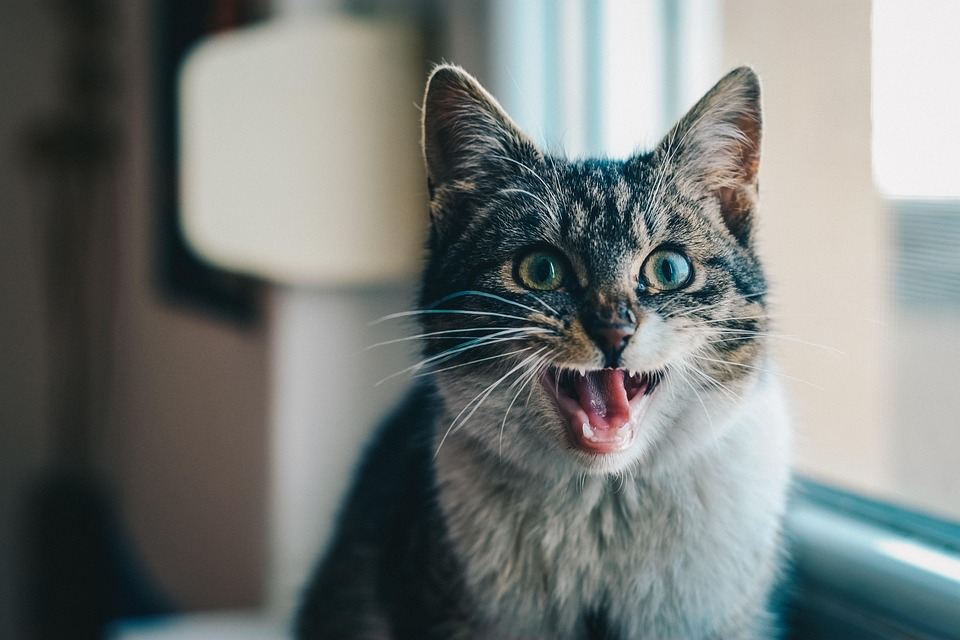
Mastering Kittenhood: A Comprehensive Guide to Raising Healthy and Happy Indoor Cats
Bringing a new kitten into your home is an exciting and rewarding experience. These playful, curious creatures quickly become cherished members of the family. However, raising a healthy and happy indoor cat requires understanding their needs and providing them with the right care, environment, and attention. Whether you’re a new or experienced cat owner, this comprehensive guide will offer valuable insights and practical advice to help you master kittenhood.
Choosing the Right Kitten
The journey to raising a healthy indoor cat begins with choosing the right kitten. Consider adopting from a shelter or rescue organization, as there are many kittens in need of loving homes. When selecting a kitten, look for signs of good health, such as bright eyes, a clean coat, and playful behavior. It’s also important to consider the kitten’s temperament and how it will fit into your household.
Preparing Your Home
Before bringing your kitten home, prepare your living space to ensure it’s safe and welcoming. Remove any hazards, such as electrical cords, small objects, and toxic plants. Create a designated space for your kitten with a comfortable bed, toys, and scratching posts. This area will serve as a safe haven for your kitten to explore and relax.
Feeding Your Kitten
A balanced diet is crucial for your kitten’s growth and development. Choose high-quality kitten food that provides the necessary nutrients. Kittens require more protein and calories than adult cats, so ensure you’re feeding them kitten-specific formulas. Fresh water should always be available. Consult your veterinarian for personalized feeding recommendations based on your kitten’s age, weight, and health status.
Veterinary Care and Vaccinations
Regular veterinary care is essential for keeping your kitten healthy. Schedule an initial vet visit soon after bringing your kitten home for a comprehensive health check. Your veterinarian will guide you on the necessary vaccinations, deworming, and flea/tick prevention. Spaying or neutering your kitten is also recommended to prevent unwanted litters and reduce certain health risks.
Litter Training
Most kittens learn to use the litter box quickly, but some may need guidance. Choose a litter box that’s easy for your kitten to access and fill it with a soft, unscented litter. Place the box in a quiet, accessible area. Show your kitten the litter box and gently place them in it after meals and naps. Consistency and patience are key to successful litter training.
Socialization and Play
Socializing your kitten is crucial for preventing behavioral issues and ensuring they grow into well-adjusted adults. Expose your kitten to various people, sounds, and environments in a positive manner. Interactive play is vital for your kitten’s physical and mental development. Engage your kitten with toys that mimic prey and encourage their natural hunting instincts.
Understanding Kitten Behavior
Kittens are naturally curious and energetic. Understanding their behavior can help you manage their needs and prevent problems. Common behaviors include pouncing, scratching, and climbing. Provide appropriate outlets for these behaviors with toys and scratching posts. If your kitten develops undesired behaviors, such as biting or excessive meowing, address them with gentle correction and positive reinforcement.
Grooming and Hygiene
Regular grooming is essential for your kitten’s health and hygiene. Brush your kitten’s coat to reduce shedding and prevent matting. Introduce tooth brushing early to promote good dental health. Regularly check your kitten’s ears and eyes for signs of infection. Start grooming routines early to help your kitten become accustomed to being handled.
Creating a Stimulating Environment
Indoor cats require mental and physical stimulation to prevent boredom and promote well-being. Provide a variety of toys, climbing structures, and scratching posts. Consider creating a window perch for your cat to observe the outdoors safely. Rotate toys and introduce new activities to keep your cat engaged. Enrichment can prevent behavioral issues and enhance your cat’s quality of life.
Building a Strong Bond
Building a strong bond with your kitten involves spending quality time together and understanding their unique personality. Engage in interactive play, grooming sessions, and quiet moments of companionship. Learn to read your kitten’s body language and respect their boundaries. A strong bond will lead to a trusting and loving relationship.
Managing Health and Wellness
Maintaining your kitten’s health involves regular veterinary check-ups, a balanced diet, and monitoring for any signs of illness. Keep an eye out for changes in appetite, behavior, or litter box habits, as these can indicate health issues. Provide a clean and stress-free environment to support your kitten’s overall well-being.
Transitioning to Adult Cat Care
As your kitten grows, their needs will change. Transition to adult cat food around one year of age and adjust feeding quantities accordingly. Continue regular veterinary care and adjust play and enrichment activities to suit your cat’s adult preferences. Keep up with grooming and maintain a stimulating environment to ensure a smooth transition into adulthood.
Conclusion
Raising a healthy and happy indoor cat requires dedication, understanding, and love. By providing proper care, a safe environment, and enriching experiences, you can ensure your kitten grows into a well-adjusted and content adult cat. Whether you’re a new or experienced cat owner, the insights and advice in this guide will help you master kittenhood and enjoy a fulfilling relationship with your feline companion.
#ChatGPT assisted in the creation of this article.








